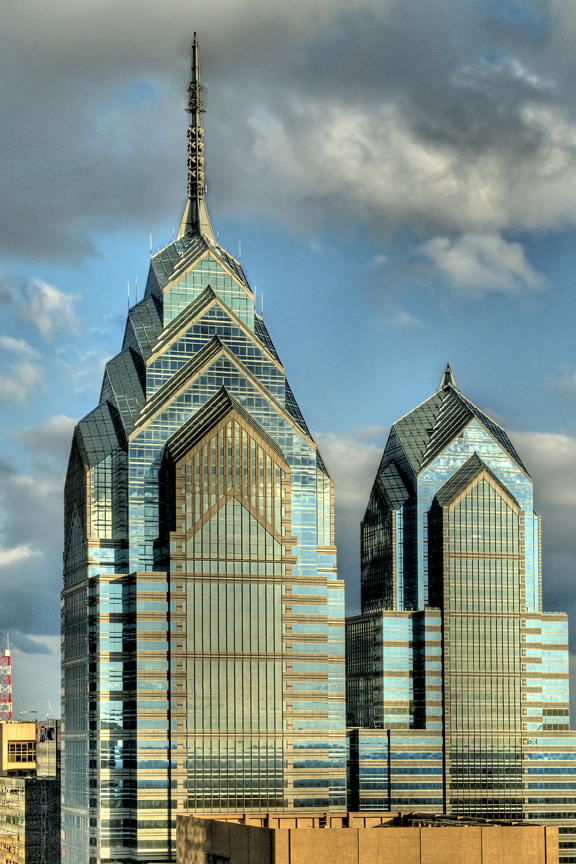Helmut Jahn (1940-2021) died three days ago in an unfortunate bicycle accident. I don’t know if the world is a better place thanks to his flashy, in-your-face architecture, but his Liberty Place project, once the tallest in Philadelphia, does not make the city a better place. Ostensibly a take-off of the Chrysler Building, the pair of skyscrapers has always struck me as an uncomfortable presence on the skyline. First off all, Philadelphia has always had its own distinctive tall buildings, beginning with John McArthur, Jr.’s city hall tower (1894), Howe & Lescaze’s PSFS Building (1932), and Ritter & Shay’s U. S. Customs House (1934), so an ersatz New York tower seems out of place. Unlike Van Alen’s Art Deco original, Jahn’s building is modernist, and it suffers a problem common to most modernist work, that is, its big formal moves are unsupported by appropriate detail. There are no equivalents to the Chrysler’s hood-ornament eagle heads, the hubcap decorations, and the sunburst spire. The result is like a preliminary sketch–or a rough plasticine model. Moreover, to make matters worse, there are two towers (built in 1987 and 1990), which undercuts the effect. It is possible to make beautiful twin towers, as Emery Roth’s 1930s San Remo and El Dorado apartment buildings in Manhattan demonstrate, but there is nothing evocative about Jahn’s dumpy pair.

